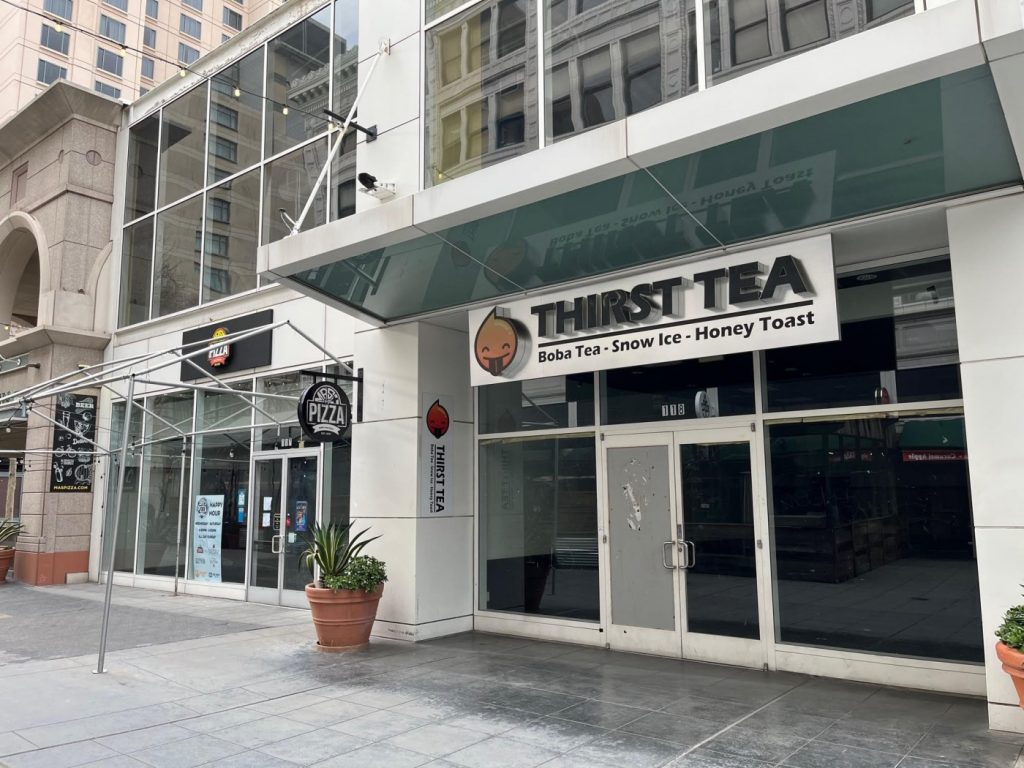With office vacancies in downtown still far above pre-pandemic levels, San Jose leaders are hoping to lure businesses by offering them prime incentives — a temporary reprieve on businesses taxes and parking.
The city will consider approving the incentive plan in October for new businesses that purchase or lease at least 2,500 square feet downtown over a four-year term. The plan would waive business taxes and provide a free parking spot per 1,000 square feet over a two-year period.
“I think it’s important that we get creative and use incentives like this to get more employers here because, in the long run, there will be many positive knock-on effects, even if we aren’t collecting a business tax for the first two years that they’re here,” San Jose Mayor Matt Mahan said in an interview with The Mercury News.
While foot traffic has recovered to pre-pandemic levels — showing one of the best rebound rates according to a University of Toronto study — the downtown experience remains a tale of two cities between night and day.
San Jose maintains a much more lively atmosphere on nights and weekends mainly due to the experience economy the city has built. The most recent Arts & Economic Prosperity study revealed that arts and culture contributed $292 million in economic activity to the city.
“There’s no place in the South Bay where we’re going to find a broader, more interesting mix of cultural and gastronomic experiences,” Mahan said. “It’s why we’ve seen downtown have such a robust rebound.”
Meanwhile, office vacancy rates remain above 30% as businesses have either left the downtown core or shrank their footprint as they weather more challenging economic headwinds and grapple with return-to-office protocols.
“For a lot of businesses, it doesn’t pencil financially so they’re not renewing their leases,” said San Jose Downtown Association CEO Alex Stettinski, who estimated that businesses could save anywhere between $25,000 and $500,000 depending on their office footprint. “We have a vacancy rate that is substantial so we have to creatively find ways to push businesses over the edge with financial incentives.”
Mahan said the average office worker spends $195 per week on goods and services, making them an important driver of other jobs and economic activity for small businesses so bringing more people to downtown would be a boon.
Although the incentive program could mean a potential loss of revenue for the Downtown Association for two years because it would exclude payments to the business improvement district, Stettinski said the organization still supports the program because it sees a larger benefit of having these businesses locked into the area for a longer period.
Mahan and Stettinski both agreed that businesses stand to benefit beyond the tax holiday and free parking, which is capped at 500 spaces, in that it will improve the experience for employees through a shorter commute and providing all the amenities downtown has to offer.
“We have a million people in the city and you know much of that workforce lives near, or at least closer to downtown than employers up on the peninsula and south of downtown,” Mahan said. “Rather than forcing workers to spend two hours a day in the car on 85 or 280, or 101, you can offer people a short, easy commute.”
Although some larger employers, like the Santa Clara Valley Transportation Authority, are sniffing around downtown for new office space, Mahan hoped the program would help incentivize more small businesses and startups to flock to the area.
“We have a lot of people working out of their proverbial garage,” Mahan said. “It may actually be their living room or their home office, but we have a lot of startups in the South Bay where people are working out of their homes and I think getting those companies to consider establishing a physical location downtown is part of the play here.”
Related Articles
Los Gatos hardware store may not be demolished for housing
Livermore land is bought for $40 million-plus, tech project is eyed
San Jose final goal for blighted vacant lot: sell ‘nuisance’ property
Big Santa Clara tech campus is bought for more than $50 million
Housing project with affordable homes may sprout on big Los Gatos site
The business leasing program is one of the several economic tools San Jose has or is rolling out as it takes a “portfolio approach” to spurring growth.
Earlier this year, the city extended its Downtown High Rise program, temporarily waiving construction taxes and some building fees to help facilitate housing production as development costs soared by at least 30% over the past few years. The increase in builders’ costs has slowed the production of 4,078 apartments downtown despite the city approving plans for 14 towers.
San Jose has also expended money on storefront rehabilitation grants, blight removal, and street cleaning, with the understanding that there’s no one solution to downtown’s woes.
“There are a dozen different bets or strategies that we’re pursuing,” Mahan said. “I firmly believe that the Bay Area’s future growth will be centered in the South Bay, particularly in San Jose, and downtown is the only viable urban center for Silicon Valley. Downtown San Jose is really Silicon Valley’s downtown. I want to see our downtown grow and evolve and mature into being a place that is a primary provider of both jobs and housing and continues to grow as a destination for arts, culture and what you might call sports and entertainment.”


